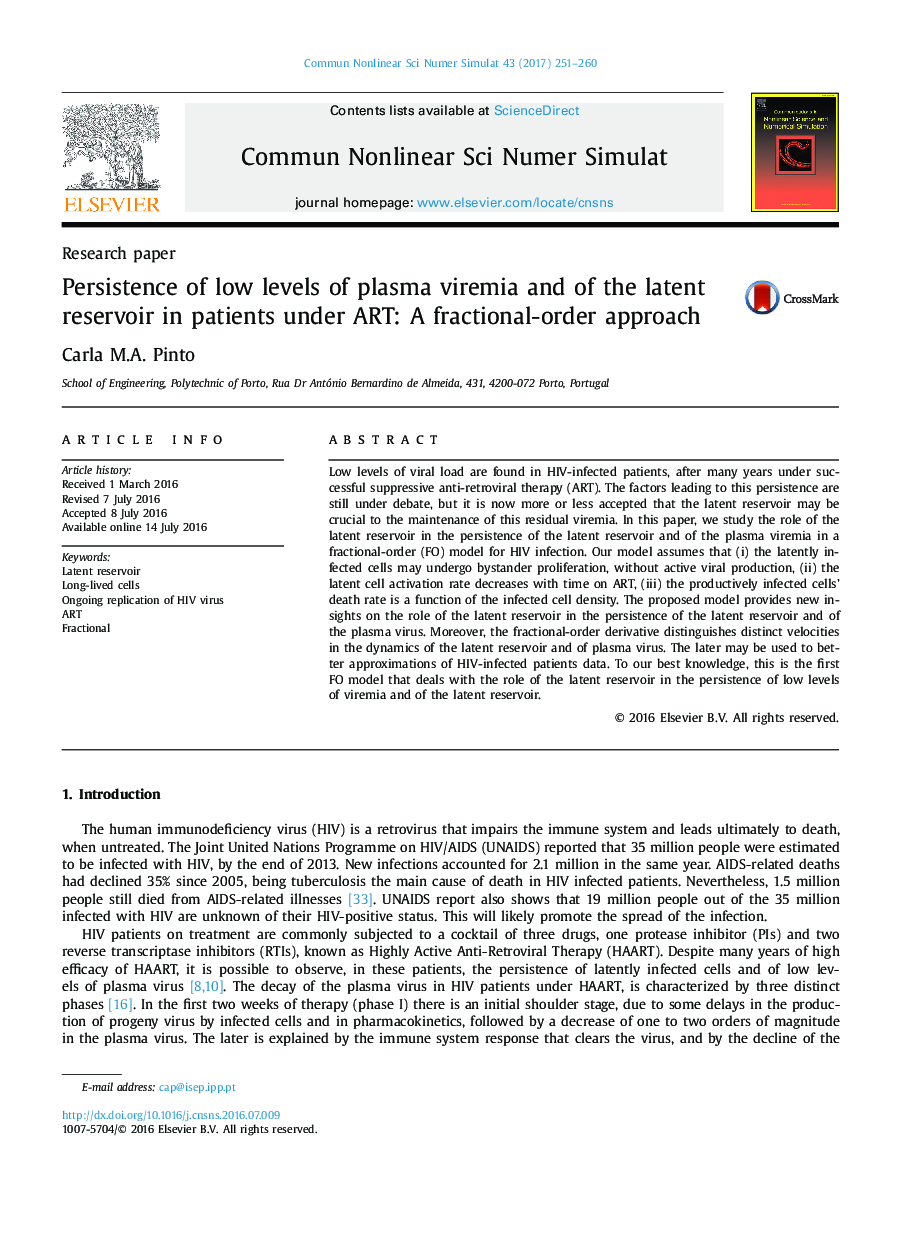| Article ID | Journal | Published Year | Pages | File Type |
|---|---|---|---|---|
| 7155072 | Communications in Nonlinear Science and Numerical Simulation | 2017 | 10 Pages |
Abstract
Low levels of viral load are found in HIV-infected patients, after many years under successful suppressive anti-retroviral therapy (ART). The factors leading to this persistence are still under debate, but it is now more or less accepted that the latent reservoir may be crucial to the maintenance of this residual viremia. In this paper, we study the role of the latent reservoir in the persistence of the latent reservoir and of the plasma viremia in a fractional-order (FO) model for HIV infection. Our model assumes that (i) the latently infected cells may undergo bystander proliferation, without active viral production, (ii) the latent cell activation rate decreases with time on ART, (iii) the productively infected cells' death rate is a function of the infected cell density. The proposed model provides new insights on the role of the latent reservoir in the persistence of the latent reservoir and of the plasma virus. Moreover, the fractional-order derivative distinguishes distinct velocities in the dynamics of the latent reservoir and of plasma virus. The later may be used to better approximations of HIV-infected patients data. To our best knowledge, this is the first FO model that deals with the role of the latent reservoir in the persistence of low levels of viremia and of the latent reservoir.
Keywords
Related Topics
Physical Sciences and Engineering
Engineering
Mechanical Engineering
Authors
Carla M.A. Pinto,
